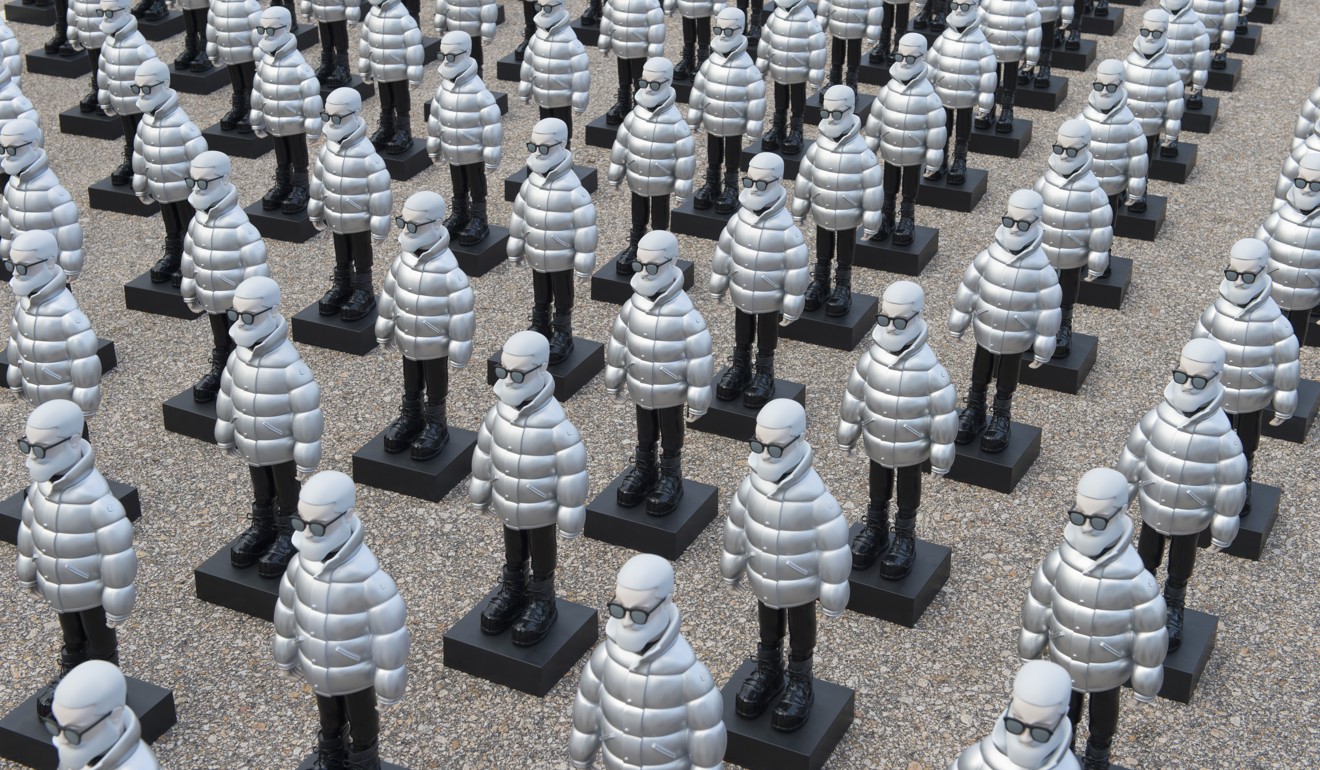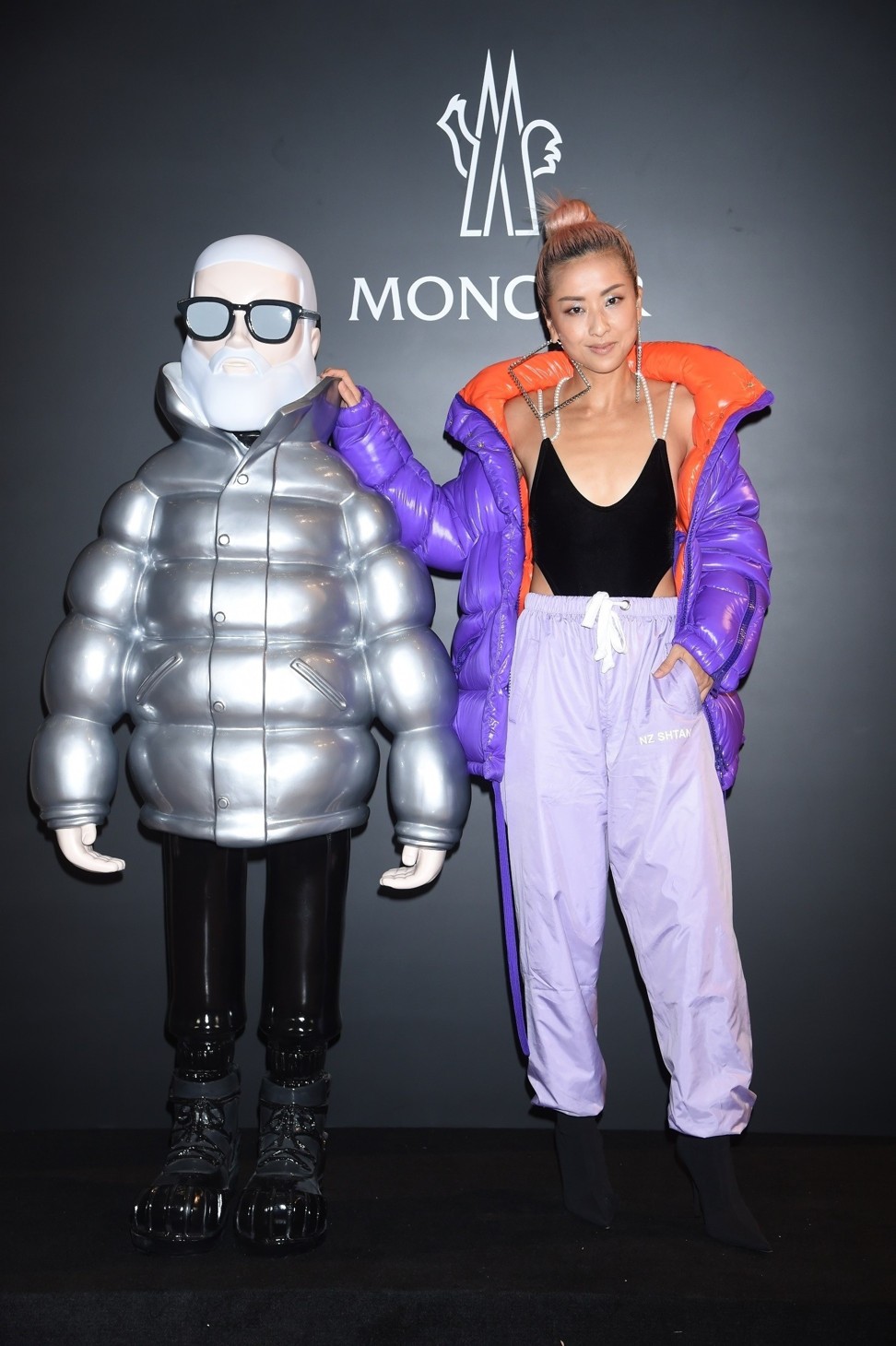
With new Hong Kong store, Moncler CEO Remo Ruffini shows faith in city’s luxury fashion market
Involving no fewer than 10,000 figurines placed in several locations, the launch of Moncler’s new boutique in Tsim Sha Tsui – its largest in Asia – reflects both confidence in Hong Kong and the success of its CEO’s winning strategies
In a further boost to luxury retail in Hong Kong, Moncler, the Italian fashion company famed for its down jackets, opened its largest Asian boutique last Friday in Tsim Sha Tsui.
To celebrate the opening, Moncler has placed over 10,000 Mr Moncler figurines in several locations around the city, of which 350 unique models were created by street artist Craig Costello. A quirky way to garner attention, it also signals a vote of confidence in Hong Kong, with the company usually reserving such complicated campaigns to its core markets.
10 down and puffer jackets to keep you warm and wonderful this winter
“We opened our first Asia flagship here [in Hong Kong] but this is on another level,” says Moncler CEO Remo Ruffini, who flew in for the opening of the 5,382 square foot street-level store. “Finally we have a space to explain to people our brand.”
The opening of the Canton Road store is a testament to Moncler’s current good standing, with revenues exceeding €1 billion (US$1.18 billion) for the first time in 2016 and expecting to jump again this year. Much of that success is down to Ruffini, 50, a hands-on CEO and to many a creative director in all but name. Since taking over in 2003 he has charted the company’s meteoric rise from a heritage winter sportswear brand to a cutting-edge fashion-forward powerhouse.

The core of Ruffini’s strategy has been making its signature down jackets desirable items across the globe. “It sells just as well here in Hong Kong as it does in Canada,” he says, adding that the company has toyed with fabric technology to make lighter-weight jackets for warmer climes.
Fundamentally, though, Ruffini puts Moncler’s success down to two things. “First we are quite young, and [second] we never compromise,” he says.

Founded in Grenoble in 1952, Moncler has only become a widely known brand in the last decade – to many consumers it is a fresh name in the luxury space. The company owes its popularity with younger buyers to its innovative approach to fashion, having embraced collaborations with streetwear and avant-garde designers 10 years before many other labels.
“We were one of the first; we did collaborations with Junya Watanabe and Balenciaga back in 2004,” Ruffini says. “Now it’s very trendy – most [other] brands started collaborations two years ago. For us it’s 15 years in the making.”

Moncler’s list of collaborators also includes Mary Katrantzou, Sacai and Ami, and the company is currently working with Off-White designer Virgil Abloh and rising British designer Craig Green, who Ruffini describes as “one of the few geniuses in menswear”.
What unifies designers like Green and Abloh is that they make clothes that aren’t outwardly commercial. Ruffini sees this sort of experimentation as an opportunity to boost Moncler’s branding. “I’m very focused on brand building and not just trying to sell jackets,” he says, adding that this edgier attitude feeds into the company’s communications and art-driven advertising.

Ruffini may indulge creativity, but not if he thinks it no longer serves its purpose – as could be seen this month when he shut down the high-fashion lines Gamme Bleu, designed by Thom Browne, and Gamme Rouge, designed by Giambattista Valli.
The announcement came as a surprise to the fashion world, but for Ruffini it was the logical decision. “Fashion is now very fast and very volatile. [The previous strategy] made sense seven or eight years ago, [but] the market has changed a lot since then and it wants something new, something digital. We have something in mind that’s very close to that,” he says, alluding to a big announcement that is due in February.
Paris Fashion Week wrap-up: Chanel, Moncler, Alexander McQueen, Valentino, Hermès, Miu Miu, Louis Vuitton
As the decision to close two high-fashion lines showed, Moncler’s recent success isn’t likely to see Ruffini resting on his laurels or, as he explains, constrained to five- or 10-year plans. Instead he wants to continue to pursue a strategy that doesn’t compromise. “We have a clear idea of what we want to do,” he says. “We don’t follow numbers or the market.”

